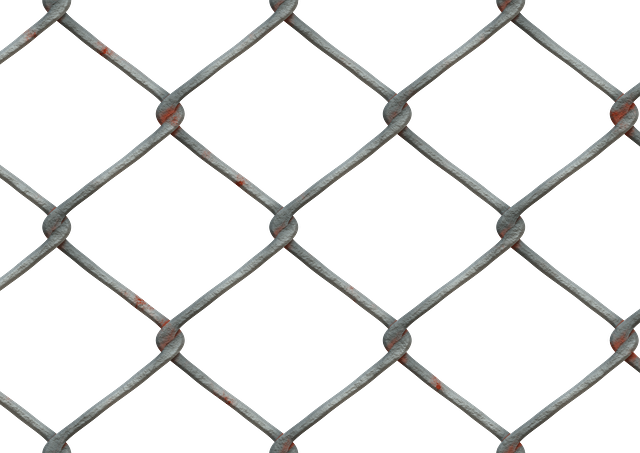For New Bedford, Massachusetts homeowners considering a DIY fence installation, this guide offers invaluable tips and step-by-step instructions. From preparing your yard to choosing the right materials for the local climate, you’ll learn how to plan, build, and finish a sturdy, attractive fence that enhances your property’s value. Discover the tools and techniques needed for success, ensuring your new fence stands the test of time.
- Prepare Your Yard for Fence Installation
- Choose the Right Fence Material for New Bedford Climate
- Plan Your Fence Layout and Design
- Tools and Equipment Needed for DIY Fence Project
- Step-by-Step Guide to Post Hole Digging
- Securing and Finishing Your New Fence
Prepare Your Yard for Fence Installation
Before you begin installing your new fence, it’s crucial to prepare your yard for the process. Clear any debris or obstructions from the area where the fence will be erected, such as old vegetation, rocks, and branches. This step ensures a smooth and efficient installation process. Mark out the perimeter of your desired fence line using string or flags to guide the placement of posts. Ensure you follow local regulations and property lines during this planning phase.
Leveling the ground is also essential for a secure fence. Uneven terrain can compromise the stability of your fence over time, so use a level to ensure each section of the fence line is consistent. This preparation not only saves time but also guarantees a durable and aesthetically pleasing fence installation in New Bedford, Massachusetts.
Choose the Right Fence Material for New Bedford Climate
When considering fence installation in New Bedford, Massachusetts, selecting the right material is paramount and largely depends on the local climate. The region’s weather patterns present unique challenges, including harsh winters with significant snowfall and hot, humid summers. Therefore, homeowners should opt for materials that can withstand these conditions to ensure longevity and maintain their investment.
For instance, a durable vinyl fence is an excellent choice due to its resistance to rot, warping, and breaking caused by extreme temperatures and moisture. It also requires minimal maintenance and offers insulation during winter, preventing damage from ice buildup. Alternatively, wood fences are traditional yet require more upkeep, especially with regular sealing to protect against decay and insect infestation.
Plan Your Fence Layout and Design
Before breaking ground on your DIY fence installation project, take time to plan out the layout and design. Consider the purpose of the fence—is it for privacy, security, or aesthetic appeal? This decision will influence both the style and height requirements. Sketch out a rough outline of your property and mark areas where you envision the fence to be placed, keeping in mind local regulations regarding set-backs from property lines and roads.
Think about the materials you’ll use; wood, vinyl, or chain link each offer unique aesthetics and maintenance needs. Measure the perimeter of the area to be fenced, ensuring accurate measurements for posts placement. Plan for any gates or openings, considering their size and placement for functionality and visual appeal. This meticulous planning stage will set a solid foundation for your DIY fence installation project.
Tools and Equipment Needed for DIY Fence Project
When taking on a DIY fence installation project in New Bedford, Massachusetts, having the right tools and equipment is essential for success. You’ll need a variety of items to ensure your fence is built sturdy and secure. At a minimum, prepare for your task by gathering a hammer, wooden stakes, a measuring tape, post-hole digger, power drill with various bits, a level, and a string line. These tools will help you mark out the fence line, dig holes for the posts, attach panels or pickets to the frames, and ensure everything is plumb and level.
Don’t forget about safety gear, including work gloves, protective eyewear, and a face mask. This is crucial as you’ll be handling sharp objects and working in close quarters with machinery. Proper safety measures will help prevent injuries and ensure your project goes smoothly, allowing you to focus on creating a beautiful new fence for your New Bedford home.
Step-by-Step Guide to Post Hole Digging
Before installing your fence, digging post holes is a crucial step. Start by marking the spots where your fence posts will go using stakes and string. Next, clear away any grass or topsoil at these marked locations, creating a circular area about 12 inches wider than the intended hole depth. Use a post-hole digger to excavate the soil, going down as far as necessary for stable support. The ideal depth depends on your climate; in colder regions, go deeper to prevent heaving due to frost. Once the holes are dug, remove any large rocks or debris and ensure the sides of the holes are smooth.
Securing and Finishing Your New Fence
After installing your new fence, it’s crucial to take the necessary steps to secure and finish it properly. First, check all connections and fasteners to ensure they’re tight and secure. Loose fittings can weaken the fence over time and create potential safety hazards. Consider using a power drill with a torque setting for added security, especially on areas exposed to weather conditions.
Once secured, apply an appropriate exterior finish or paint to protect your new fence from elements like rain, snow, and UV rays. A good-quality sealant or paint will enhance the visual appeal and prolong the lifespan of your fence. Regular maintenance, including cleaning and reapplication of finish as needed, will help keep your fence looking its best for years to come.
